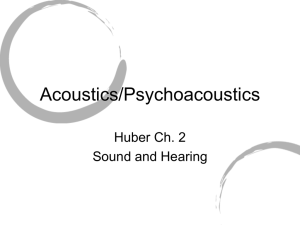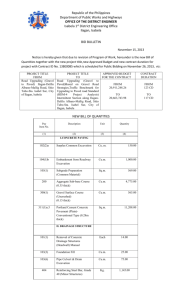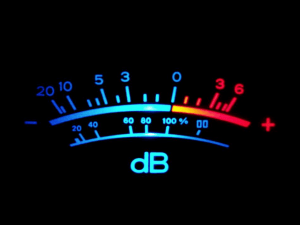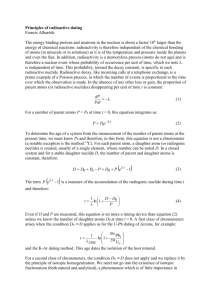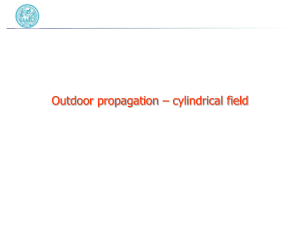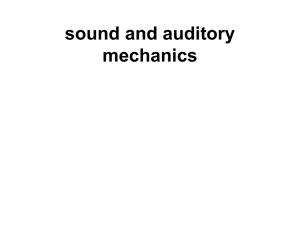Science Manuscript Template - Springer Static Content Server
advertisement
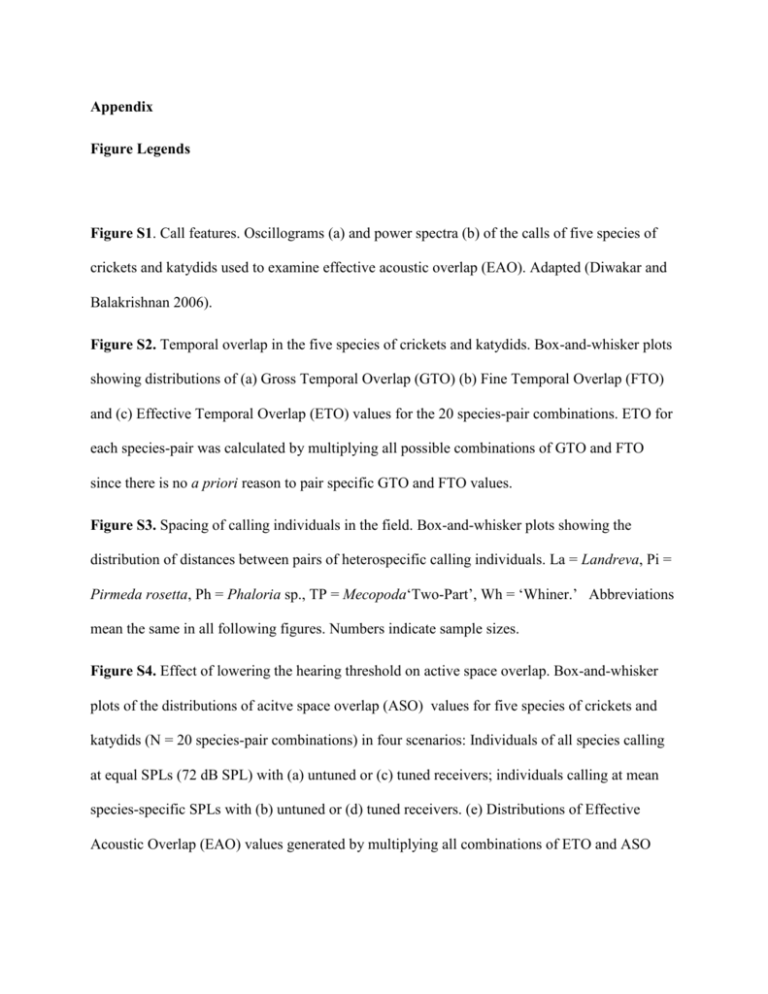
Appendix Figure Legends Figure S1. Call features. Oscillograms (a) and power spectra (b) of the calls of five species of crickets and katydids used to examine effective acoustic overlap (EAO). Adapted (Diwakar and Balakrishnan 2006). Figure S2. Temporal overlap in the five species of crickets and katydids. Box-and-whisker plots showing distributions of (a) Gross Temporal Overlap (GTO) (b) Fine Temporal Overlap (FTO) and (c) Effective Temporal Overlap (ETO) values for the 20 species-pair combinations. ETO for each species-pair was calculated by multiplying all possible combinations of GTO and FTO since there is no a priori reason to pair specific GTO and FTO values. Figure S3. Spacing of calling individuals in the field. Box-and-whisker plots showing the distribution of distances between pairs of heterospecific calling individuals. La = Landreva, Pi = Pirmeda rosetta, Ph = Phaloria sp., TP = Mecopoda‘Two-Part’, Wh = ‘Whiner.’ Abbreviations mean the same in all following figures. Numbers indicate sample sizes. Figure S4. Effect of lowering the hearing threshold on active space overlap. Box-and-whisker plots of the distributions of acitve space overlap (ASO) values for five species of crickets and katydids (N = 20 species-pair combinations) in four scenarios: Individuals of all species calling at equal SPLs (72 dB SPL) with (a) untuned or (c) tuned receivers; individuals calling at mean species-specific SPLs with (b) untuned or (d) tuned receivers. (e) Distributions of Effective Acoustic Overlap (EAO) values generated by multiplying all combinations of ETO and ASO values for species-specific call SPLs and tuned receivers. Receivers were assumed to have a hearing threshold of 35 dB SPL at their best frequencies. Figure S5. Effective acoustic overlap in spatially randomized multispecies choruses. Frequency histogram showing the distribution of Effective Acoustic Overlap (EAO) values for the five species (N = 9 choruses). (a) P. rosetta, (b) Landreva sp., (c) ‘Whiner’, (d) Mecopoda ‘TwoPart’, (e) Phaloria sp.. White bars: Spatially randomized choruses (100 randomizations per chorus); Black bars: Observed choruses. 2 3 4 5 6 7 Table S1. Call features of the 14 species of crickets and katydids. Adapted (Diwakar and Balakrishnan 2006). Bandwidth was measured at 20 dB below peak amplitude . 8 Table S2. Broadcast radii in meters of the five species of crickets and katydids for tuned and untuned receivers with different hearing thresholds (35 and 40 dB SPL). Eq_int = Equal calling SPL of 72 dB, SS_int = species-specific call SPLs 9 Table S3. Analysis of deviance results for pairwise active space overlap including the effect of receiver stratification . Df Deviance Residual Residual Df Deviance 5567 1.66X1011 5.89X1010 5548 1.07X1011 <0.001 10 5547 7.34X1010 <0.001 5546 7.06X1010 <0.001 5545 6.97X10 10 <0.001 5526 4.19X1010 <0.001 9 5507 3.60X10 10 <0.001 5506 3.60X1010 8 5487 3.57X10 10 5486 3.57X1010 0.25 10 0.15 0.99 Null Speciespair 19 Tuning 1 3.36X10 SPL 1 2.78X109 Stratification 1 8.72X10 8 Speciespair X Tuning 19 2.78X1010 Speciespair X SPL 19 5.97X10 Tuning XSPL 1 1.16X104 P-values 0.96 Speciespair X Stratification 19 2.77X10 Tuning X Stratification 1 7.86X106 SPLX Stratification 1 1.22X10 7 5485 3.57X10 Speciespair X Tuning X SPL 19 2.32X107 5466 3.56X1010 19 2.15X10 8 5447 3.54X10 10 0.009 7 5428 3.54X10 10 0.99 5427 3.54X1010 0.04 Speciespair X Tuning X Stratification Speciespair X SPL X Stratification 19 4.34X10 Tuning X SPL X Stratification 1 2.79X104 10 <0.001 Table S4. Species composition of ten natural choruses Methods (Supplementary Information) Active space overlap 1) Calculation of broadcast radii We calculated the mean broadcast radius of each species based on its transmission profile for two different situations: i) when all species call at 72 dB SPL (at 0.5 m from source) and ii) when each species calls at its own species-specific SPL. In each of these cases, we calculated the broadcast radius of the callers for two scenarios: a) when the receiver is untuned (same hearing sensitivity at all frequencies) and b) when the receiver is tuned to the call of its own species (highest sensitivity to frequencies with maximum energy in its own species’ call). 11 Calculation of broadcast radii for untuned receivers: Transmission experiments with the calls of the five species broadcast at 72 dB SPL (at 0.5 m from source) were carried out in the natural habitat and attenuation profiles generated as described elsewhere (Jain and Balakrishnan 2012). SPL measurements for attenuation were made using a Bruel & Kjaer Sound Level Meter (Type 2230) and ½” microphone (Type 4155) with a 500 Hz high-pass filter to approximate an untuned insect ear (for Mecopoda‘Two-Part’ and P. rosetta, we used our previously published attenuation curves (Jain and Balakrishnan 2012)). We used 40 (or 35) dB SPL to define the limit of the broadcast volume based on the known values of hearing thresholds of crickets and katydids (Kostarakos et al 2008; Schmidt et al 2011; Schmidt and Römer 2011; Hummel et al 2011). Using the attenuation curve we determined the distance at which the call SPL dropped to the hearing threshold. This distance was recorded as the broadcast radius of the species when the sender calls at 72 dB SPL. To calculate the broadcast radius of these species when they call at species-specific SPLs, we adjusted the starting SPL to equal that of the mean species-specific SPL. Using the equation of this parallel curve we calculated the broadcast radius as above. Calculation of broadcast radii for tuned receivers: The three cricket species were assumed to be narrowly tuned to the carrier frequency (CF) of their own song and to have a hearing threshold of 40 (or 35) dB SPL. The two katydid species were assumed to be broadly tuned with a higher threshold of 60 dB for all frequencies below 7 kHz and a threshold of 40 (or 35) dB SPL for higher frequencies, based on the published tuning curve for Mecopoda elongata, a sibling species of Mecopoda ‘Two-part’ with a very similar call spectrum (Nityananda and Balakrishnan 2006; Hummel et al 2011). For each of the five species we generated four different attenuation curves, each representing the attenuation profile of an animal’s call as heard by each of the other four species, by carrying out a separate set of transmission experiments using the setup described 12 previously (Jain and Balakrishnan 2012). The calls were broadcast at species-specific SPLs and the SPL measurements were made using four different filter settings: a 500 Hz high-pass filter to approximate katydid ear tuning and three sets of measurements taken with a one-third octave band-pass filter centered at 4, 5 and 6.3 kHz respectively to approximate the tuning curves of cricket ears of different species (Phaloria sp., Landreva sp. and ‘Whiner’. To determine the broadcast radius of a given species A (potential masker) as perceived by the receiver of another species B, we used the attenuation curve of species A generated based on the SPL measurements made using the frequency filter of species B. Then we used the equation of the curve to calculate the distance at which the SPL of species A falls to the hearing threshold. The attenuation curves were then recalculated for a scenario where all species were calling at the same SPL by adjusting the source SPL to 72 dB. This procedure was repeated to estimate the broadcast radius of each species as heard by every other species based on its tuning. In this way we generated four asymmetrical 5 × 5 matrices (Table S2) that contained the broadcast radius of every species depending on who the listener species was for four different scenarios (Table S2). 2) Simulations for active space overlap in species pairs In the simplistic case of two intersecting spheres, we created the smallest bounding box whose volume contained both the spheres completely such that [xmin, ymin, zmin] was the lower left corner of the bounding box and [xmax, ymax, zmax] was the upper right corner. The simulation then divided the bounding box into sampling volumes of dimensions of 10 cm3 and checked whether each sampling volume lay within any of the spheres. If [x, y, z] represents a sampling volume then it would lie within sphere [C[X ,Y, Z], r] , if the condition below is true: [x− X ]2+ [ y −Y]2+ [z − Z]2≤ r2 13 If dV1 and dV2 are the number of sampling volumes inside sphere 1 and 2 respectively and dVshared is the number of sampling volumes inside both sphere 1 and sphere 2, then dVshared / dV1and dVshared /dV2 are the ASO probabilities of sphere 1 masked by sphere 2 and vice versa. In cases where part of the broadcast sphere was below the ground we adjusted the co-ordinates of the bounding box such that the lower plane of the box was at ground level (z co-ordinates≥ 0). This ensured that broadcast volumes below ground were omitted from the calculations. To incorporate stratification in the simulation, the z co-ordinates (height) of the bounding box were restricted to a lower and upper bound corresponding to the strata of the caller (Diwakar and Balakrishnan 2007): 0 – 2 m for Landreva sp. and Mecopoda “Two-part”; 0 – 4 m for Phaloria sp.; 0 – 8 m for “Whiner” and Pirmeda rosetta. The algorithm was validated by using a number of test cases. For instance, we ran the simulations on simulated choruses where the focal animal and the maskers were at the same height and such that their spheres were well above the ground, and saved the results. We then lowered the height of the animals to be equal to 0 (simulating a situation where all animals are calling from the ground) such that the broadcast spheres would be cut by the ground exactly in the middle rendering them hemispheres. The simulation was validated by comparing the results of the two runs where the values from the second run were half of that of the first run. Moreover, we checked for errors resulting from the sampling resolution (d = 0.1) by comparing our results against the formula for calculating the volume of two intersecting spheres (in the simplistic case of the callers’ broadcast spheres completely lying above the ground and being sampled by an unstratified receiver). The simulation results had an error of less than 0.5% with respect to the theoretical values for spheres of sizes comparable to those in this study. 14 3) Simulation for EAO in multispecies choruses EAO was determined for each calling individual in a spatially reconstructed chorus in three dimensions taking into account overlap from all heterospecific calling individuals (multiple neighbours). Here the ASO probability for the focal cricket/katydid will be equivalent to the ratio of the volume of the focal sphere to the intersecting volumes of the neighboring spheres. The bounding box, calculated using the same formula as for two-sphere intersection, was restricted to contain only the focal sphere since we were only interested in the proportion of volume of the focal sphere shared by other spheres (all maskers). dV1 represented the samples contained in the focal sphere and dVshared represented the samples that were contained in any of the other spheres as well as the focal sphere. 15
